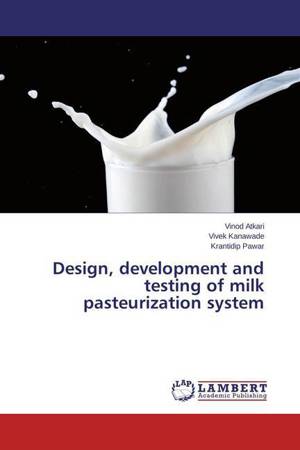
- Afhalen na 1 uur in een winkel met voorraad
- Gratis thuislevering in België vanaf € 30
- Ruim aanbod met 7 miljoen producten
- Afhalen na 1 uur in een winkel met voorraad
- Gratis thuislevering in België vanaf € 30
- Ruim aanbod met 7 miljoen producten
Zoeken
Design, development and testing of milk pasteurization system
Vinod Atkari, Vivek Kanawade, Krantidip Pawar
Paperback | Engels
€ 53,95
+ 107 punten
Omschrijving
The newly developed pasteurizer was tested at raw milk inlet temperature of 2, 4, 6 and 8 degree Centigrade and total milk solids of 15 and 18 %. The pasteurization temperature of 78 to 80 degree Centigrade for 20 seconds was used for the testing. The pasteurizer was tested for overall heat transfer coefficient, regeneration efficiency, total heat load and pressure drop. The temperature, pressure and milk flow rates were recorded at an interval of 5 minute during operation through PLC system. The calculated values for the regeneration efficiency, logarithmic mean temperature difference, overall heat transfer coefficient, total pressure drop in plate heat exchanger were statistically analysed. The logarithmic mean temperature difference was used to find the running time of the newly developed system. The pasteurized milk side was always at higher pressure than raw milk side. The product side was also at higher pressure than hot and chilled water side. This was found to be effective to avoid the cross contamination.
Specificaties
Betrokkenen
- Auteur(s):
- Uitgeverij:
Inhoud
- Aantal bladzijden:
- 104
- Taal:
- Engels
Eigenschappen
- Productcode (EAN):
- 9783659689277
- Verschijningsdatum:
- 31/03/2015
- Uitvoering:
- Paperback
- Afmetingen:
- 150 mm x 220 mm
- Gewicht:
- 163 g

Alleen bij Standaard Boekhandel
+ 107 punten op je klantenkaart van Standaard Boekhandel
Beoordelingen
We publiceren alleen reviews die voldoen aan de voorwaarden voor reviews. Bekijk onze voorwaarden voor reviews.








